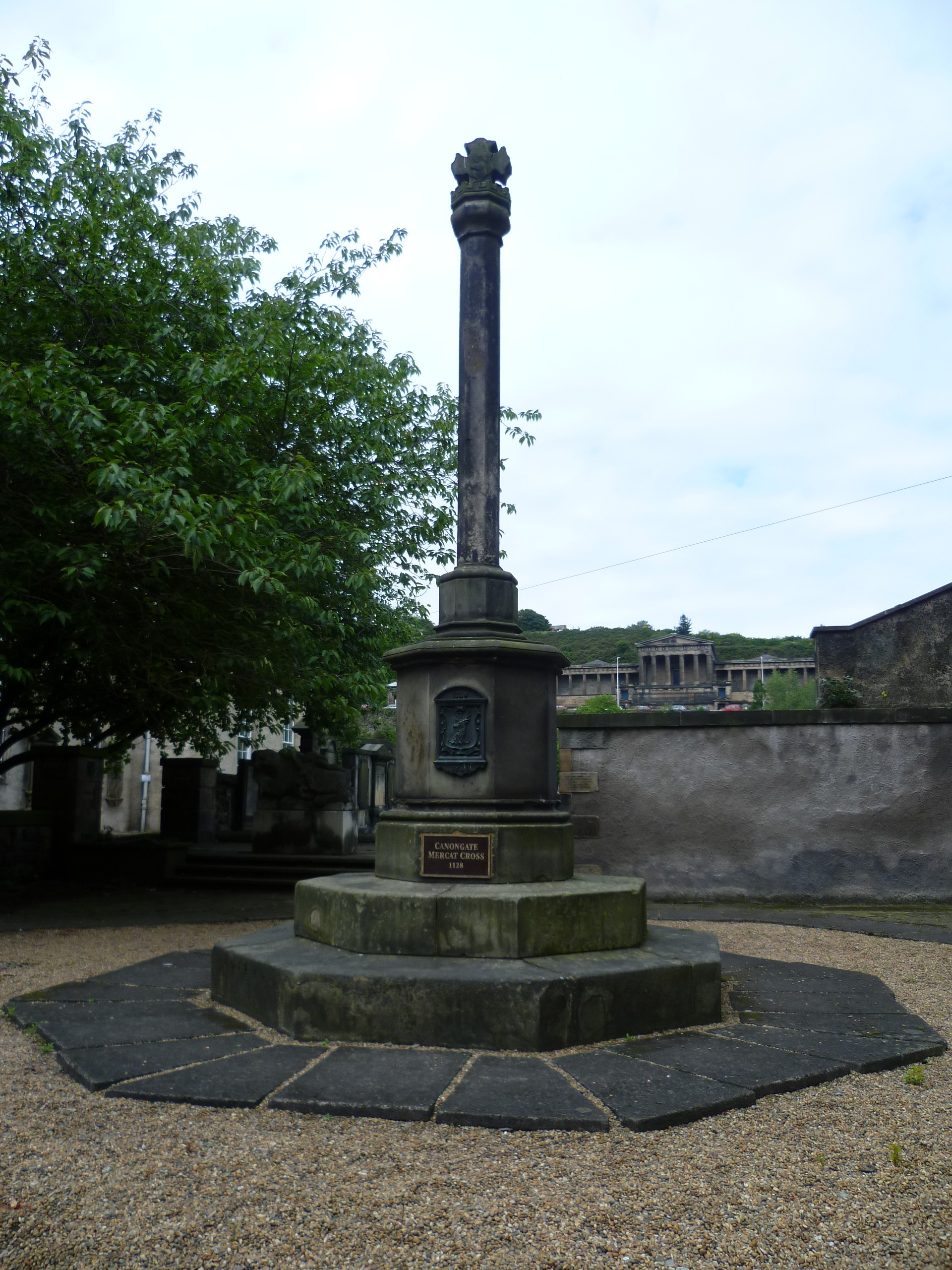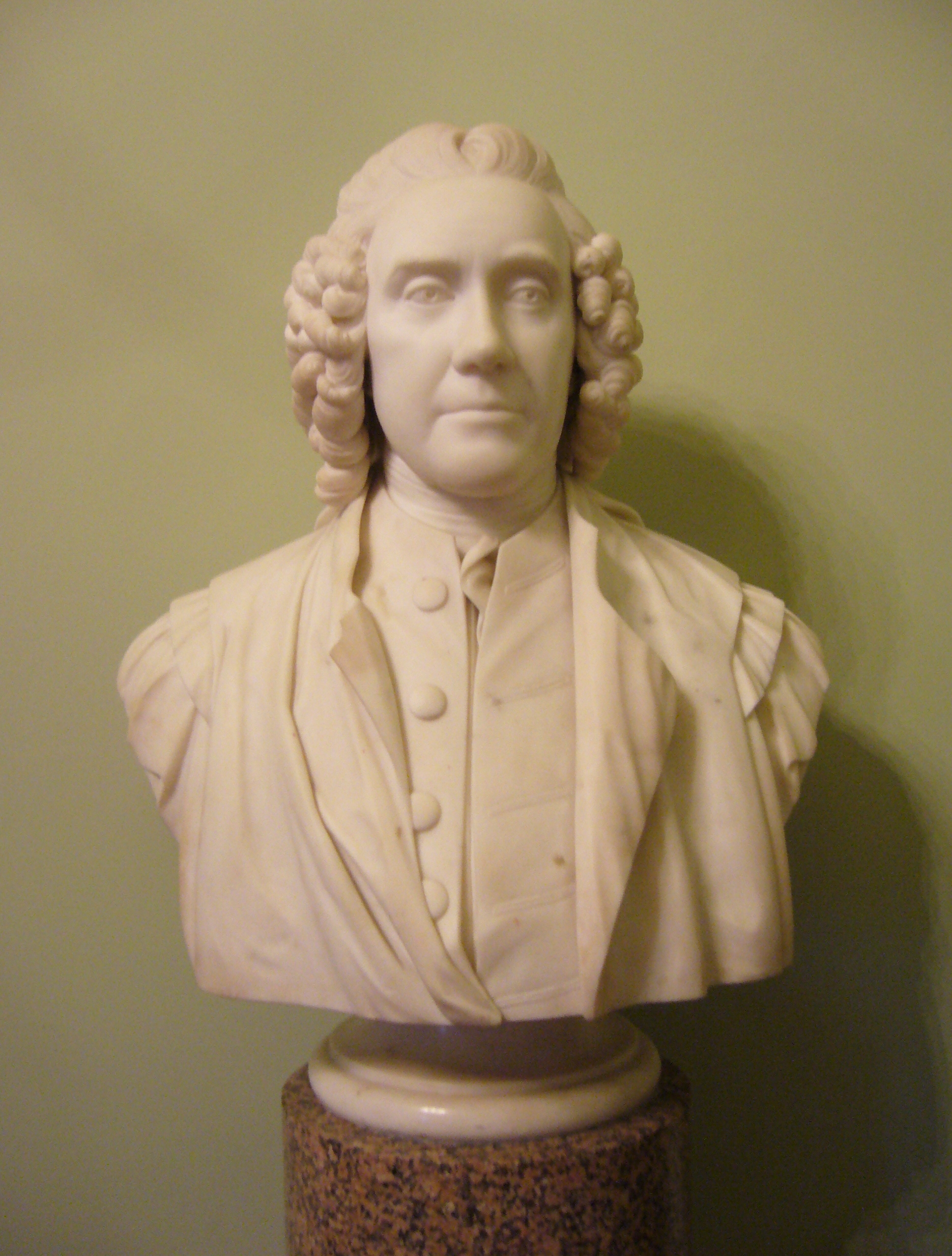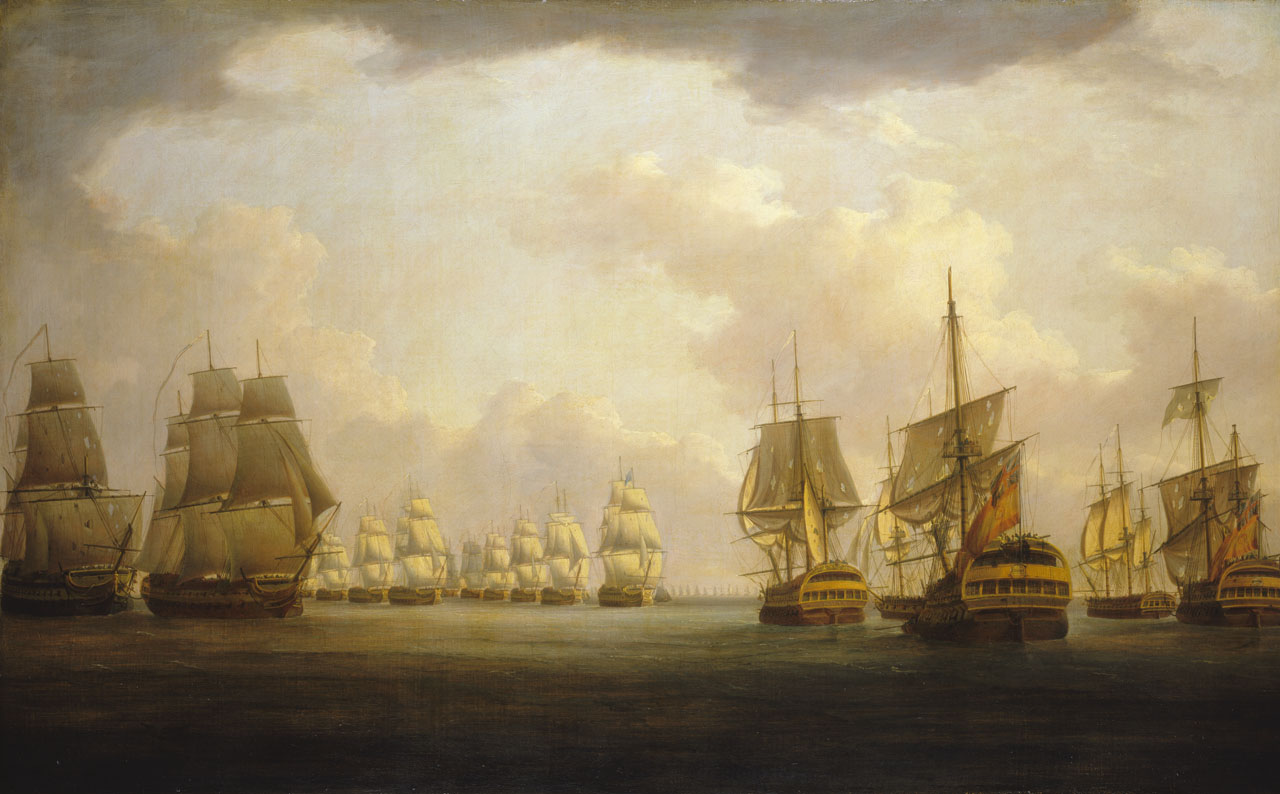|
Canongate Kirkyard
The Canongate Kirkyard ( en, Churchyard) stands around Canongate Kirk on the Royal Mile in Edinburgh, Scotland. The churchyard was used for burials from the late 1680s until the mid-20th century. The most celebrated burials at the kirkyard are the economist Adam Smith and the poet Robert Fergusson, but many other notable people were interred in the cemetery. It has been claimed that David Rizzio, the murdered private secretary of Mary, Queen of Scots, lies here, although it is highly unlikely that an Italian Catholic would be reinterred in a Protestant graveyard 120 years after his death. History The Canongate was, until the 19th century, a separate parish from Edinburgh. This separate parish was formerly served by Holyrood Abbey at the foot of the Royal Mile, and Lady Yester's Church on High School Wynd. In 1687 King James VII adopted the abbey church as a Royal Chapel, and the general population worshipped in Lady Yester's Kirk (built in 1647) until 1691. Both of these sites ... [...More Info...] [...Related Items...] OR: [Wikipedia] [Google] [Baidu] |
Canongate Kirkyard From The Calton Hill, Edinburgh
The Canongate is a street and associated district in central Edinburgh, the capital city of Scotland. The street forms the main eastern length of the Royal Mile while the district is the main eastern section of Edinburgh's Old Town. It began when David I of Scotland, by the Great Charter of Holyrood Abbey c.1143, authorised the Abbey to found a burgh separate from Edinburgh between the Abbey and Edinburgh. The burgh of Canongate that developed was controlled by the Abbey until the Scottish Reformation when it came under secular control. In 1636 the adjacent city of Edinburgh bought the feudal superiority of the Canongate but it remained a semi-autonomous burgh under its own administration of bailies chosen by Edinburgh magistrates, until its formal incorporation into the city in 1856. The burgh gained its name from the route that the canons of Holyrood Abbey took to Edinburgh—the canons' way or the canons' gait, from the Scots word ''gait'' meaning "way". In more modern time ... [...More Info...] [...Related Items...] OR: [Wikipedia] [Google] [Baidu] |
Canongate Tolbooth
Canongate Tolbooth is a historic landmark of the Old Town area of Edinburgh, built in 1591 as a tolbooth, that is, the centre of administration and justice of the then separate burgh of the Canongate which was outside the Edinburgh town walls. It ceased to be a municipal building in 1856 and it is now occupied by The People's Story Museum and is protected as a category A listed building. History The tower of the tolbooth was built in 1591, and the block to the east of it at that time or slightly after, by Sir Lewis Bellenden, baron of Broughton and feudal superior of the burgh of Canongate and Lord Justice Clerk of Scotland. It served as the courthouse, burgh jail and meeting place of the town council. Many Covenanters were held in the tolbooth in poor conditions in the 17th century and a riot took place in the building in May 1692. It ceased to be the meeting place of the burgh council when Canongate was annexed by Edinburgh in 1856. In 1875 the City Architect, Robert Morha ... [...More Info...] [...Related Items...] OR: [Wikipedia] [Google] [Baidu] |
George Drummond
George Drummond (1688–1766) was accountant-general of excise in Scotland and a local politician, elected Lord Provost of Edinburgh a number of times between 1725 and 1764. Life Drummond was born at Newton Castle in Blairgowrie, Perthshire. He was educated at the High School in Edinburgh and began his career as an accountant, working on the financial details of the 1707 Act of Union at 18. In 1707 he was appointed Accountant General, at age 20, of the Board of Customs, being promoted to Commissioner in 1717. By the 1720s, the English were attempting to reform the Scottish taxation system. Although this climate of political turmoil promoted Drummond by 1723, it also led to public demonstrations in June 1725 against the arrival of the English malt tax in Scotland. During the Malt Tax riots in Glasgow, soon to be bookseller Andrew Millar (then still an apprentice), directly challenged Drummond's authority by printing opposition material in Leith, outside the council of Edin ... [...More Info...] [...Related Items...] OR: [Wikipedia] [Google] [Baidu] |
University Of Edinburgh Medical School
The University of Edinburgh Medical School (also known as Edinburgh Medical School) is the medical school of the University of Edinburgh in Scotland and the United Kingdom and part of the College of Medicine and Veterinary Medicine. It was established in 1726, during the Scottish Enlightenment, making it the oldest medical school in the United Kingdom and is one of the oldest medical schools in the English-speaking world. It is widely regarded as one of the best medical schools in the United Kingdom and the world. The medical school in 2022 was ranked 1st in the UK by the Guardian University Guide, In 2021, it was ranked third in the UK by The Times University Guide, and the Complete University Guide. It also ranked 21st in the world by both the Times Higher Education World University Rankings and the QS World University Rankings in the same year. According to a Healthcare Survey run by Saga in 2006, the medical school's main teaching hospital, the Royal Infirmary of Edinburgh, ... [...More Info...] [...Related Items...] OR: [Wikipedia] [Google] [Baidu] |
Charles Alston (botanist)
Charles Alston (1683 – 22 November 1760) was a Scottish botanist. Career Alston was born in Hamilton, Lanarkshire, and was apparently raised by the Duke and Duchess of Hamilton. In 1715 he went to Leyden to study under the Dutch physician Hermann Boerhaave. On his return to Scotland he became lecturer in '' materia medica'' and botany at Edinburgh and also superintendent of the botanical gardens. He was a critic of Linnaeus's system of plant classification. He was appointed Regius Keeper of the Royal Botanic Garden Edinburgh in 1716, holding the position until 1760. Family He married first Robina Lockhart. Issue- Robina born 21 Jun 1731 in Canongate who married in Edinburgh on 6 Jan 1754 to Alexander Birnie, of Bromhill, b 1708 d before 1770 On 3 October 1741 he married (secondly) in Canongate Kirk Bethia Birnie (b. 1706) daughter of John Birnie, of Broomhill. He is buried in Canongate Kirkyard on the Royal Mile in Edinburgh, immediately east of the church. Upon his d ... [...More Info...] [...Related Items...] OR: [Wikipedia] [Google] [Baidu] |
Robert Calder
Admiral Sir Robert Calder, 1st Baronet, (2 July 174531 August 1818) was a British naval officer who served in the Seven Years' War, the American Revolutionary War, the French Revolutionary Wars and the Napoleonic Wars. For much of his career he was regarded as a dependable officer, and spent several years as Captain of the fleet, Captain of the Fleet under Admiral John Jervis, 1st Earl of St Vincent, Sir John Jervis. However, he is chiefly remembered for his controversial actions following the Battle of Cape Finisterre (1805), Battle of Cape Finisterre in Trafalgar campaign, 1805 which resulted in his court-martial. Though he was removed from his sea command, he was retained in the Navy and later served as Commander-in-Chief, Plymouth, Commander-in-Chief of the base at Plymouth. Early life Robert Calder was born in Elgin, Moray, Elgin, Scotland on 2 July 1745, second son to Sir James Calder and Alice Hughes, daughter of Admiral Robert Hughes.Tracy p.68 His father was the 3rd Ba ... [...More Info...] [...Related Items...] OR: [Wikipedia] [Google] [Baidu] |
Calder Baronets
There have been two Calder Baronetcies. The Calder Baronetcy, of Muirton in the County of Moray, was created in the Baronetage of Nova Scotia on 5 November 1686 for James Calder. The baronetcy became either extinct or dormant on the death of the sixth baronet, William Henry Walsingham Calder, in 1887. The Calder Baronetcy, of Southwick in the County of Southampton, was created in the Baronetage of Great Britain Baronets are a rank in the British aristocracy. The current Baronetage of the United Kingdom has replaced the earlier but existing Baronetages of England, Nova Scotia, Ireland, and Great Britain. Baronetage of England (1611–1705) King James I ... on 22 August 1798 for Captain Sir Robert Calder, third son of the third Baronet of the 1686 creation. It became extinct on his death in 1818. Calder baronets, of Muirton (1686) *Sir James Calder, 1st Baronet (1657–1711) *Sir Thomas Calder, 2nd Baronet (1682–1760) *Sir James Calder, 3rd Baronet (1712–1774) *Major G ... [...More Info...] [...Related Items...] OR: [Wikipedia] [Google] [Baidu] |
Robert Keith (historian)
Bishop Robert Keith (1681–1757) was a Scottish Episcopal bishop and historian. Life Born at Uras in Kincardineshire, Scotland, on 7 February 1681, he was the second son of Alexander Keith and Marjory Keith (née Arbuthnot). He was educated at Marischal College, Aberdeen between 1695 and 1699; graduating with an A.M. in about 1700. He was preceptor to George, Lord Keith (afterward the last Earl Marischal) from July 1703 to July 1710, and to his brother, James Keith. He was ordained a deacon on 16 August 1710, and from November 1710 to February 1713, he was domestic chaplain to Charles Hay, 13th Earl of Erroll and his mother Anne, the Dowager Countess. Three years later, he was ordained to the priesthood on 26 May 1713. On the same day, he was appointed curate at Barrenger's Close meeting-house in Edinburgh, and in 1733 he became Incumbent of the meeting-house; a post he kept until his death. In 1716, he and other clergy in Edinburgh were prosecuted by the Commission of ... [...More Info...] [...Related Items...] OR: [Wikipedia] [Google] [Baidu] |
Charles Wesley
Charles Wesley (18 December 1707 – 29 March 1788) was an English leader of the Methodist movement. Wesley was a prolific hymnwriter who wrote over 6,500 hymns during his lifetime. His works include " And Can It Be", " Christ the Lord Is Risen Today", the carol "Hark! The Herald Angels Sing", and " Lo! He Comes With Clouds Descending". Charles Wesley was born in Epworth, Lincolnshire, the son of Anglican cleric and poet Samuel Wesley and his wife Susanna. He was a younger brother of Methodist founder John Wesley and Anglican cleric Samuel Wesley the Younger, and he became the father of musician Samuel Wesley and grandfather of musician Samuel Sebastian Wesley. He was educated at Oxford University, where his brothers had also studied, and he formed the "Holy Club" among his fellow students in 1729. John Wesley later joined this group, as did George Whitefield. Charles followed his father and brother into the church in 1735, and he travelled with John to Georgia in America, re ... [...More Info...] [...Related Items...] OR: [Wikipedia] [Google] [Baidu] |
John Frederick Lampe
John Frederick Lampe (born Johann Friedrich Lampe; probably 1703 – 25 July 1751) was a musician and composer. Life Lampe was born in Saxony, Germany but came to England in 1724 and played the bassoon in opera houses. In 1730, he was hired by John Rich to be the composer for Covent Garden Theatre. During his time as a bassoonist in London opera houses, in 1727, he played at the coronation of King George II. Like Arne, Lampe wrote operatic works in English in defiance of the vogue for Italian opera popularized by George Frideric Handel and Nicola Porpora. Lampe, along with Henry Carey and J. S. Smith, founded the short-lived English Opera Project. He became a friend of Charles Wesley, and wrote several tunes to accompany Wesley's hymns. His works for the stage include the mock operas ''Pyramus and Thisbe'' (1745) and '' The Dragon of Wantley'' (1734), which ran for 69 nights, a record for the time, surpassing ''The Beggar's Opera''. From November, 1750 until his death, ... [...More Info...] [...Related Items...] OR: [Wikipedia] [Google] [Baidu] |
Memento Mori
''Memento mori'' (Latin for 'remember that you ave todie'Literally 'remember (that you have) to die' , Third Edition, June 2001.) is an artistic or symbolic acting as a reminder of the inevitability of . The concept has its roots in the philosophers of |
Moderator Of The General Assembly Of The Church Of Scotland
The Moderator of the General Assembly of the Church of Scotland is the ministers and elders of the Church of Scotland, minister or elder chosen to moderate (chair) the annual General Assembly of the Church of Scotland, which is held for a week in Edinburgh every year. After chairing the Assembly, the Moderator then spends the following year representing the Church of Scotland at civic events, and visiting congregations and projects in Scotland and beyond. Because the Church of Scotland is Scotland's national church, and a presbyterian church has no bishops, the Moderator is – arguably alongside the Lord High Commissioner to the General Assembly of the Church of Scotland – the most prominent figure in the life of Church of Scotland adherents. Office The Moderator of the General Assembly, moderator is normally a minister or elder of considerable experience and held in high esteem in the Church of Scotland. The moderator is nominated by the "Committee to Nominate the Moderator", ... [...More Info...] [...Related Items...] OR: [Wikipedia] [Google] [Baidu] |










